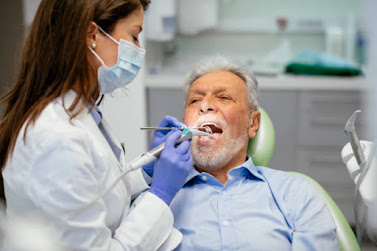What Is Sedation Dentist?
Sedation dentistry is a procedure that uses pharmacological agents to make you feel more comfortable during your dental visit. This type of treatment may include oral sedation, nitrous oxide, and Twilight IV sedation. If you have anxiety or fear of the dentist, sedation may be the right solution for you.
Oral sedation
Oral sedation for dentists is a technique used by dentists to help patients relax and be comfortable during dental procedures. The procedure consists of administering a sedative drug to the patient orally. This method is designed to make the patient feel relaxed during the procedure and helps the dentist perform the procedure more efficiently.
If you are planning on getting sedation during your dental procedure, it is a good idea to discuss the risks involved with your dentist. Ask them what training and experience they have in using sedation. Moreover, ask them if they have the appropriate equipment to monitor vital signs, which is recommended by the American Dental Association. Finally, make sure they have drugs to reverse the sedation in case something goes wrong.
Benefits of Sedation
In general, oral sedatives work by making patients feel relaxed and sleepy. This allows them to communicate and respond during the procedure. If you are afraid of the dentist or dental surgery, oral sedation dentistry may be the best option for you. It can also be used for dental procedures involving multiple parts of the mouth.
Nitrous oxide
Whether you're worried about a dental appointment or you'd like your child to feel relaxed during the procedure, a nitrous oxide sedation dentist is an excellent option. The gas is safe for both adults and children. It can be titrated to suit a child's needs and can speed up procedures that require extended periods of stillness. However, a child may experience nausea or discomfort while wearing the mask, so you should discuss sedation options with your dentist before the procedure.
Although nitrous oxide can relieve minor dental anxiety, the serious dental phobia will probably require an oral sedative. In such cases, you should bring a responsible driver with you to the dentist's office. The sedative will help you feel relaxed and forget all about the treatment.
IV sedation
For those who find dental care stressful, IV sedation is a great option. This form of sedation leaves patients relaxed and with little to no memory of the experience. This type of sedation is safe and effective, and it can help people who experience severe dental anxiety and fear.
It is important to discuss the risks associated with this type of sedation with your dentist. During the procedure, your dentist may need to make adjustments to your sedation level, based on physical signs. You won't be aware of these changes because you're unconscious. Your dentist will monitor you throughout the procedure, and they'll use a monitor to gauge your heart rate and blood pressure.
IV sedation is more comfortable than other forms of sedation, and it can help you feel relaxed during your dental appointment without the need for a general anesthetic. The drugs administered through an IV are faster-acting than other forms of sedation, and the dose is continually monitored throughout the procedure.
Twilight IV sedation
Patients often avoid the dentist because of anxiety, which can be eliminated with twilight IV sedation. This type of sedation is less invasive than general anesthesia and has minimal side effects. It can be given outside the hospital or in the dental clinic. An anesthetist oversees the procedure and monitors the patient's response to instructions.
The main advantage of IV sedation is that it does not affect the patient's ability to feel pain. The patient is still able to move and breathe, which allows the dentist to identify abnormalities during the procedure. It also allows a dentist to perform several procedures during the same visit, which reduces overall dental care costs.
General anesthesia
General anesthesia is used when a patient needs a longer procedure and/or is nervous. With this type of anesthesia, a patient is completely unconscious, has relaxed muscles, and is often completely unaware of the procedure. The anesthetic medication is administered through an IV or a face mask. The level of anesthesia that is appropriate for a patient depends on the type of dental procedure performed and the patient's overall health. Patients should discuss any existing medical conditions, such as diabetes, high blood pressure, and heart problems, with their dentists before receiving general anesthesia.
Before considering sedation dentistry, ask about the experience of the dentist and their training. Then, ask them about the risks involved. The dentist should be able to explain the risks and potential side effects of this procedure in detail. They should also monitor the patient's vital signs during the entire procedure. The American Dental Association has specific guidelines for monitoring vital signs, which should be followed during a procedure. In addition, the dentist should have reversal agents on hand, such as oxygen, in case the patient loses consciousness.




Comments
Post a Comment